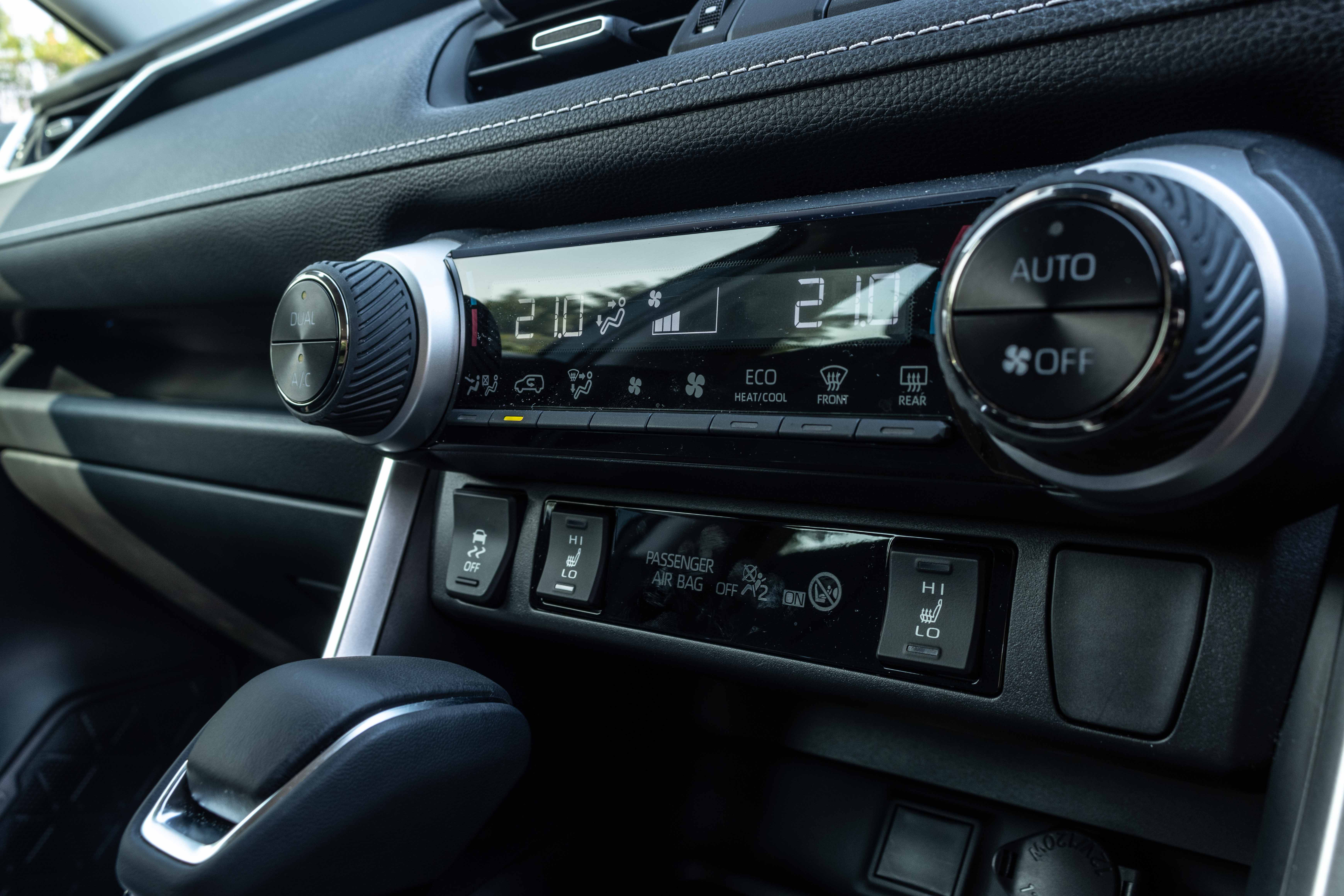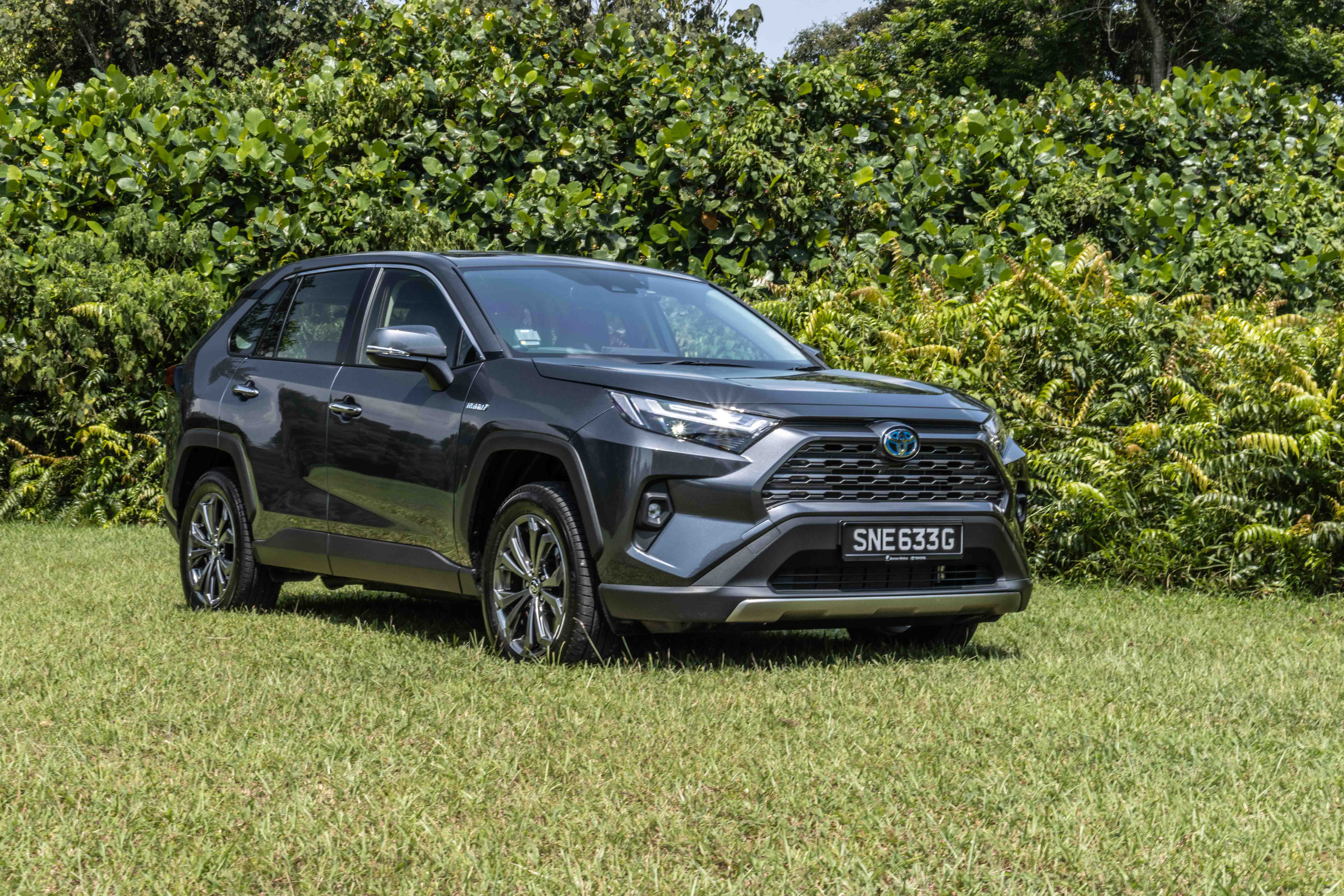2022 Toyota RAV4 Hybrid - SIP-a-dee-doodah-SIP-a-dee-ay






2022 Toyota RAV4 Hybrid - SIP-a-dee-doodah-SIP-a-dee-ay
Singapore - My-oh-my! What a wonderful time… it is for Toyota to bring us a fuel-sipping SUV. Crazy-expensive COEs aside, the other thing which would probably infuriate a car owner in Singapore is probably our current-day fuel prices. EVs are rather out of the conversation, since the average Joe will not be able to switch to an EV easily at this point, as public infrastructure is not near-ready enough, but let us not go down that rabbit hole.
But here’s the other rabbit hole I would like to jump into. And this would be the Toyota RAV4. If you could go back in time maybe two decades, the RAV4 in its second generation, was at the height of its popularity. There was a huge compact SUV whitespace here, as the ubiquitous sedan was still king. Many would remember the then Toyota Camry, duking it out with the Nissan Cefiro as the go-to towkay cars. The RAV4 on the other hand, forged its own (off the beaten) path, and challenged the “norm”. It could be bought with similar money, but with the interior space of a Corolla.

While I refrain from saying that Toyota were the only ones who made SUVs popular back in the day, they did play a major role in turning customer preferences.
Today, almost every manufacturer has something to offer in this highly competitive segment, many fielding different variants of the same car. But currently for Toyota, their SUV is available in just one variant, a 2.5 litre hybrid.
So here it is in the flesh, but do not let its aggressive origami body styling, and raised ride height fool you. It lacks actual soft-roading capability (like this Volkswagen Tiguan), neither does it scream performance (maybe like in this Mercedes-AMG GLA). The RAV4 we get, does its best work sipping on fuel, while dishing out a refined drive.
2022 Toyota RAV4 Hybrid - inside









The RAV4 shares plenty with the larger Harrier… but when I say larger, the Harrier is just 14cm longer. Both cars share the same Toyota New Global Architecture (TNGA-K) underpinnings, and therefore have the same 1620mm wheelbase. But they both share the same innards, on the inside, this is where most similarities end.
While the Harrier drops classy hints of Lexus, albeit serving this to you with a more plasticky experience, the RAV4 on the other hand, tones things down with more “universal” greys, blacks and frosted silver… plastic still. While materials are no-nonsense, touchpoints like the air-conditioning toggle knobs and front door grabs which are pleasantly rubberised, and a leather-wrapped steering wheel help break the monotony.
The infotainment system though is an aftermarket unit, meaning that you get a bezel… within a bezel, before you get to the 9.0-inch touchscreen. While the infotainment’s interface is neat, it is best described as basic. Also, if you are one who likes a quality audio system, you might get a little disappointed too. But you still get both Apple CarPlay and Android Auto connectivity, and a wireless charging pad.
And while you might knock (both physically and figuratively) the interior materials, and the lack of a factory-built infotainment, there is still enough quality here to keep would-be buyers interested. Buttons, when depressed, have a good feel to them, and the leather seats (which include a driver side power memory seat), cradle you in comfort, supporting you for longer journeys.
Unlike the Harrier, with its sloping roofline, the straight one on the RAV4, translates to better headroom for those at the rear. Rear leg space, like in the former, is easily sufficient for average-sized adults. The generous 542 litre boot has few odd corners, and there is enough space for a transverse-mounted golf bag.
2022 Toyota RAV4 Hybrid - driving it - coax… not poke






The 2.5 litre Dynamic Force hybrid powertrain in the RAV4 is shared with the Harrier. The engine alone produces 176hp and 221Nm, which… wait… yeah this is an Atkinson cycle engine, so it is built for fuel efficiency, not performance. This is combined with an electric motor, which bumps output to 215hp.
While the transmission is termed a CVT, the electric motor which drives the car is actually part of the transmission. There is no pushbelt here, meaning that you will not suffer from annoying power-sapping belt slippage later in life. Another huge advantage which the transmission boasts, is that the electric motor provides instantaneous acceleration, in contrast to a conventional CVT, which almost always suffers from inherent sluggishness.
The electric motor gets the car going in with a faint whine, like how an EV does, followed with the engine kicking in as speed builds. The RAV4 clocks 100km/h in an adequate 8.1 seconds, which is close to the Hyundai Tucson Hybrid’s 8 seconds.
The powertrain works best if you coax the throttle, rather than poke it (as this would prematurely induce the engine to start, since you are calling for the powertrain to deliver more). The electric motor cuts fuel consumption to almost zero in start-stop town traffic, where it does most of the work. Toyota officially claims that the RAV4 Hybrid does 4.7L/100km (21.3km/l), we managed 4.5L/100km (22.1km/l), very close.
Pitch the RAV4 hard into a turn, and you will find that understeer is easily induced. The suspension here is tuned for comfort over handling. The plus is, the RAV4 is very predictable, and lifting off the throttle easily tucks that front end back in.
On the run, you will find that the powertrain will toggle between its electric drive and engine power, you can feel the engine kicking in each time it starts up, to take over from the motor, but this is a rather muted, and any mild vibrations are restricted to the pedals and steering. Onto B roads, the RAV4 soaks bumps, almost like how a slice of bread soaks up your favourite lobster bisque…. Simply lovely… both of them.

Sure, the Hyundai Tucson Hybrid is sharper around the bends than the RAV4, since it does have a stiffer setup, but this comes at the sacrifice of some comfort.
The RAV4 on the other hand, does a fine job for what it is intended. So if you are looking for an SUV which can deliver a plush ride, backed by years of fuel-saving know-how behind it, the RAV4 is really quite hard to beat.
PHOTOS Clifford Chow
Toyota RAV4 Hybrid 2.5 Premium
Engine 2,487cc, inline 4
Power/rpm 176hp/5700rpm
Torque/rpm 221Nm/3,600-5,200rpm
Transmission eCVT
0-100km/h 8.1secs
Top Speed 180km/h
Fuel Consumption 4.7l/100km









